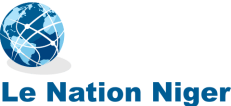EXECUTIVE SUMMARY
The regional Migrant Response Plan (MRP) for the Horn of Africa (HoA) and Yemen is an inter-agency and inter-regional plan that brings together 48 appealing organizations to provide urgent life-saving humanitarian and protection support and enhance access to basic services and medium- to long-term actions aimed at addressing the drivers of migration for migrants and host communities. The plan’s overall implementation is led by governments and supported by the Intergovernmental Authority on Development (IGAD), UN agencies, non-governmental organizations (NGOs) and international non-governmental organizations (INGOs), and civil society organizations (CSOs), and other partners (think tanks, academic institutions, etc.), while the International Organization for Migration (IOM) leads the coordination efforts for the plan’s implementation. The MRP lays the foundation for accountable, inclusive, and flexible coordination in responding to large-scale and complex migrant situations. It provides the vehicle through which partners, a broad range of other key actors, and development and financial institutions seek to foster joint humanitarian, development, and migration management programming initiatives. The MRP provides a route-based, coherent, consistent, and essential strategic framework to ensure a whole-of-government and whole-of-society response to address the drivers of migration and migrant vulnerabilities in the HoA and Yemen.
Through inter-agency planning, the MRP works through existing strategic frameworks towards the humanitarian-development-peace nexus (HDPN), which demonstrates the international community’s joint effort and commitment to complement and strengthen national and regional comprehensive responses of governments and local partners to address the multiple vulnerabilities comprehensively and foster strong socioeconomic outcomes for migrants and communities of origin, transit, and destination. The MRP leverages partners’ multisectoral and complementary capacity, reflecting a commitment towards the collective outcomes to provide a comprehensive and effective response that maintains a balance between immediate, life-saving humanitarian assistance and longer-term responses directed towards resilience and sustainable solutions.
In 2023, migration flows along the Eastern Route are anticipated to return to pre-COVID-19 levels. In 2023, the number of people in need (PiN) of humanitarian assistance is projected to reach 1,428,234. MRP partners will target 1,045,832 people, including 403,295 migrants and 642,537 host community members. A total of $84.2 million will be required to meet the needs of the target population for 2023 across the four countries that conform to the MRP: Djibouti, Ethiopia, Somalia, and Yemen.
Migration in the HoA continues to be triggered by persistent insecurity and conflict, environmental degradation, harsh climatic conditions, public health emergencies, socioeconomic drivers, and traditional seasonal factors. MRP partners foresee the ongoing drought in the HoA impacting migration,1 particularly in host communities, who frequently interact with and support migrants along the Eastern Route. The challenges along the migration corridor require complex cooperation and multi-partner engagement as it cuts across two regions and requires all stakeholders to work together to address the most pressing needs and vulnerabilities of migrants and ensure the continuity of services across the whole route.
Source: International Organization for Migration
